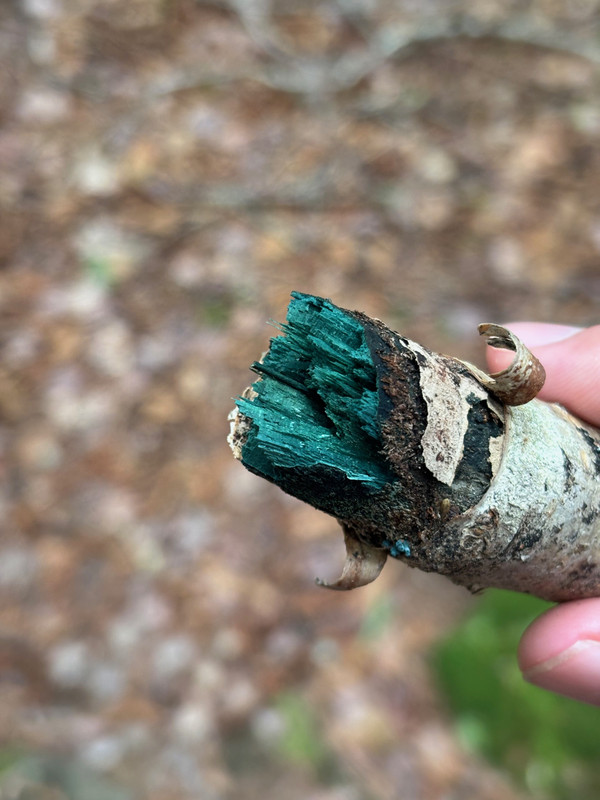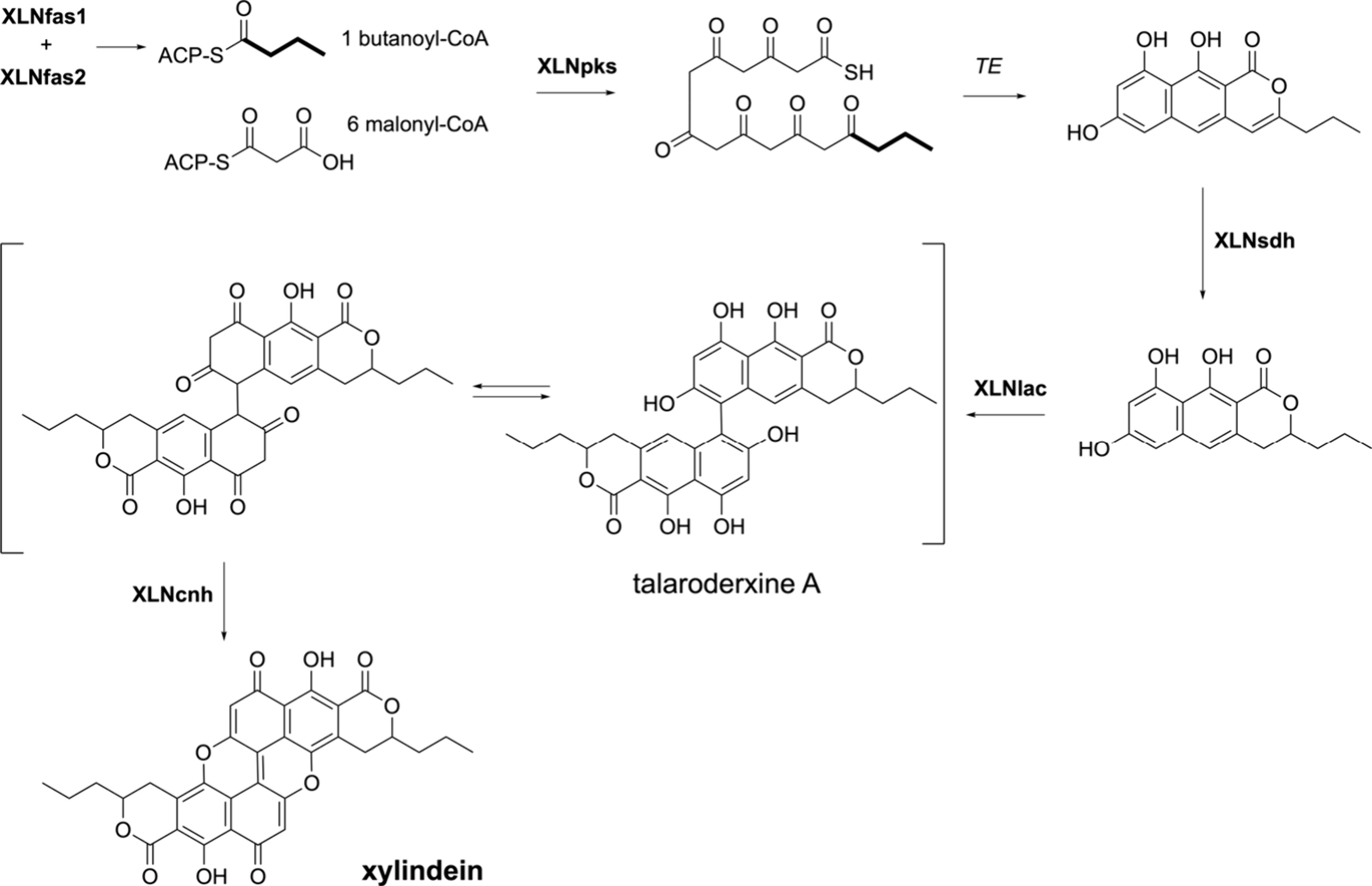While spending a Sunday wandering through Acadia National Park, Natalie and I found this interesting fallen birch branch. Depite the bark being mostly still intact and dry, the wood was stained brilliant turquoise. Very cool!

After driving home, a quick search uncovered the likely culprit: a fungus of genus Chlorociboria (likely aeruginosa or aeruginascens). Comon names include the blue stain, green elfcup, and green wood cup. While this is a type of mushroom, the fruiting bodies are less frequently seen. Instead, fungal hyphae invading the wood stain it this characteristic blue-green color through deposition of a highly conjugated napthoquinone derivative xylindein.
Interested, I found a recent study which attempted to identify the genes responsible for xylindein biosynthesis, as purification from chlorociboria species and chemical synthesis is currently difficult and inefficient.1 This is their proposed biosynthetic route based on the identified gene cluster:

It sounds like we’re still a ways off from having cheap, xylindein-dyed fabrics, but who knows!
-
Identification of a Biosynthetic Gene Cluster for the Production of the Blue-Green Pigment Xylindein by the Fungus Chlorociboria aeruginascens Yanfang Guo, Jorge Navarro-Muñoz, Caroline Rodenbach, et al. Journal of Natural Products 2025 88 (2), 233-244 DOI: 10.1021/acs.jnatprod.4c00350 ↩︎